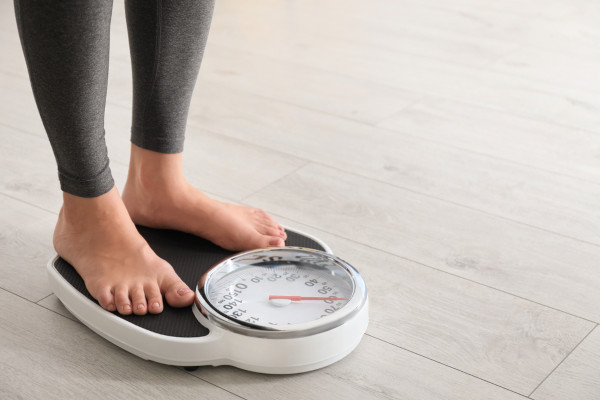In today’s fast-paced world, weight management has become a significant concern for many people. With sedentary lifestyles and unhealthy eating habits on the rise, finding effective ways to control weight is more important than ever. Fortunately, physical activity offers a powerful solution. In this article, we’ll explore how engaging in regular exercise can help you achieve and maintain a healthy weight, providing valuable insights and practical tips along the way.
Introduction
Maintaining a healthy weight is essential for overall health and well-being. Beyond aesthetics, excess weight can increase the risk of various health problems, including heart disease, diabetes, and certain types of cancer. While diet plays a crucial role in weight management, physical activity is equally important. By incorporating regular exercise into your routine, you can enhance your body’s ability to burn calories, build lean muscle mass, and achieve sustainable weight loss.
The Role of Physical Activity in Weight Management
Physical activity plays multiple roles in weight management:
- Calorie Expenditure: When you engage in physical activity, your body burns calories for energy. The more intense the activity, the more calories you burn. Over time, this calorie expenditure can contribute to weight loss or weight maintenance.
- Muscle Building: Strength training exercises, such as weightlifting or resistance training, help build lean muscle mass. Since muscle tissue burns more calories at rest than fat tissue, increasing your muscle mass can boost your metabolism and aid in weight management.
- Metabolic Rate: Regular physical activity can increase your metabolic rate, the rate at which your body burns calories at rest. This means that even when you’re not exercising, your body continues to burn calories more efficiently, supporting weight loss and weight maintenance efforts.
- Appetite Regulation: Exercise can help regulate appetite hormones, such as ghrelin and leptin, leading to better appetite control and reduced food cravings. This can make it easier to adhere to a healthy eating plan and maintain a calorie deficit for weight loss.
Types of Physical Activity for Weight Management
Several types of physical activity are effective for weight management:
- Cardiovascular Exercise: Activities like brisk walking, jogging, cycling, swimming, and dancing elevate your heart rate and burn calories, making them excellent choices for weight loss.
- Strength Training: Incorporating strength training exercises, such as weightlifting or bodyweight exercises, helps build muscle mass and boost metabolism, contributing to long-term weight management.
- High-Intensity Interval Training (HIIT): HIIT workouts involve short bursts of intense exercise followed by brief rest periods. This form of exercise is highly effective for burning calories and improving cardiovascular fitness in a short amount of time.
- Flexibility and Balance Exercises: While not directly linked to calorie expenditure, activities like yoga and tai chi promote overall well-being and may indirectly support weight management by reducing stress and improving mood, leading to better adherence to healthy habits.
Practical Tips for Incorporating Physical Activity
Here are some practical tips for integrating physical activity into your daily routine:
- Set Realistic Goals: Start with achievable goals and gradually increase the duration and intensity of your workouts as your fitness level improves.
- Find Activities You Enjoy: Choose activities that you find enjoyable and sustainable in the long term. Whether it’s hiking, dancing, or playing a sport, make exercise fun and rewarding.
- Be Consistent: Aim for consistency rather than perfection. Even short bouts of exercise can add up over time and contribute to weight management.
- Mix It Up: Incorporate a variety of activities into your routine to prevent boredom and challenge different muscle groups.
- Stay Active Throughout the Day: Look for opportunities to be active throughout the day, such as taking the stairs instead of the elevator or going for a walk during your lunch break.
FAQs (Frequently Asked Questions)
Q1: How much exercise do I need to lose weight? A1: The American College of Sports Medicine recommends at least 150 minutes of moderate-intensity aerobic exercise or 75 minutes of vigorous-intensity aerobic exercise per week for weight loss.
Q2: Can I lose weight by only focusing on diet without exercising? A2: While diet plays a significant role in weight loss, combining healthy eating habits with regular physical activity is the most effective approach for sustainable weight management.
Q3: What if I have physical limitations or health concerns? A3: Consult with a healthcare professional before starting any new exercise program, especially if you have pre-existing health conditions or concerns.
Q4: Is it better to exercise in the morning or evening for weight loss? A4: The best time to exercise is whenever you can fit it into your schedule and feel most energized and motivated. Consistency is key regardless of the time of day.
Q5: How long does it take to see results from exercise for weight loss? A5: Results vary depending on factors such as starting weight, exercise intensity, and dietary habits. However, with consistent effort, you may start to notice improvements in energy levels and fitness within a few weeks.

